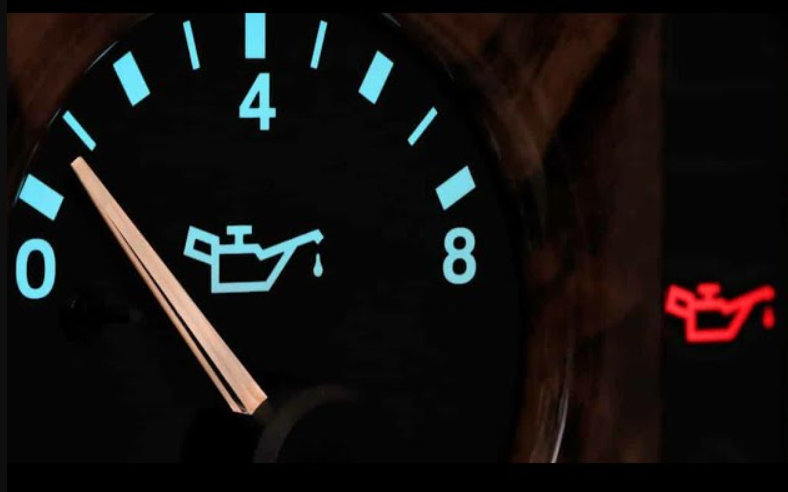
The Significance of Your Vehicle’s Oil Light: Understanding and Action
Key Takeaways
- Comprehending the gravity and meaning behind the oil light
- Immediate actions to undertake when facing an oil light warning
- Best practices for oil maintenance to prolong your vehicle’s life
When a car’s oil light illuminates the dashboard, it’s akin to a check-up revealing a high fever in a person. It spells the need for immediate attention and potentially critical care. This signal is one of the many languages your car speaks, and understanding it can be the difference between a smooth-running engine and an unexpected breakdown. This article won’t just tell you what the oil light means; it will guide you through the necessary steps to ensure your vehicle remains in top-notch condition.
Decoding Dashboard: What the Oil Light Signifies
Ever see that red or yellow oil can icon staring back at you from the dashboard and feel a pang of dread? That’s your car’s oil light, and while it’s a warning sign, there’s no need to panic just yet. Let’s break down what the oil light means and what could be causing it to come on. The oil light typically signifies a potential problem with your engine’s oil pressure. Oil acts like the lifeblood of your engine, constantly circulating to reduce friction and prevent overheating. Engine parts can grind against each other without proper oil pressure, leading to significant damage. This light could mean that your oil level is critically low, the oil is too dirty to function correctly, or there’s an issue with the oil pump. Regardless of the cause, the implications for your engine can be severe.
When Oil Speaks: Responding to Your Vehicle’s Urgent Messages
Responding enthusiastically is paramount if your car’s oil light comes on while driving. Safe driving practices dictate that you should immediately find a secure location to stop your vehicle and shut off the engine. Continuing to drive, even for a short distance, can exacerbate the issue, potentially leading to engine components seizing from the lack of lubrication. This abrupt halt in oil circulation can mean the difference between a simple maintenance job and a complete engine overhaul. It is almost always less expensive to tow a vehicle than to replace an engine that’s run without oil.
From Warning to Action: Dealing with an Illuminated Oil Light
After safely stopping your car, use the dipstick to check the oil level. If low, add oil to the recommended level and observe if the light turns off after restarting the engine. Sometimes, issues like a leak can cause a sudden drop in oil pressure, indicating a need for professional help. Note that occasionally, the light may be triggered by sensor failure. A mechanic’s expertise is necessary to differentiate between a false alarm and a severe issue. Pro advice from experts can be invaluable at this juncture, and consulting trusted sources can provide additional guidance.
The Lifeline of Your Engine: Basics of Regular Oil Maintenance
Frequent oil changes are the most straightforward way to avoid oil light warnings. Motor oil is crucial for engine lubrication, cooling, and cleaning but degrades, overheats, and collects contaminants over time. Regularly replacing old oil ensures that your engine’s moving parts are adequately lubricated and minimizes the risk of overheating and wear. Your vehicle manual will specify when to change oil and which viscosity is best for your engine. Knowing these details can extend the life of your car, maintain its performance, and keep future repair bills at bay.
Prevention Better Than Cure: Avoiding Oil Light Situations
Preventative maintenance is the most effective strategy against unexpected dashboard warnings. A diligent eye on oil levels and conditions, listening to your vehicle, and scheduling regular check-ups can avert potential issues. Furthermore, modern vehicles often come equipped with maintenance reminder systems that alert you when it’s time for a service—these should not be ignored. Using good quality oil, observing engine noise or performance changes, and following the recommended service intervals can significantly reduce the likelihood of seeing that oil light.
Fluid Mechanics: The Science Behind Engine Oil and Its Functions
Engine oil does more than lubricate; it also cools engine components by carrying heat away from moving parts. It contains additives that clean sludge and varnish from the engine. However, heat and mechanical stresses break down these additives over time, decreasing the oil’s ability to protect your engine. Consequently, timely oil changes are not just a suggestion—they are an integral part of vehicle maintenance that supports performance and longevity.
Reading Between the Lights: Dashboard Indicators Explained
The variety of lights on your dashboard isn’t just for show; each serves as a sentinel for diverse systems within your vehicle. The oil light is just one of the myriad signals, such as the battery alert, the check engine light, and the tyre pressure warning, to name a few. Familiarizing yourself with the array of indicators can save you time and money—understanding which requires immediate action and which are informational allows for proactive vehicle care.
Case Studies: Real-Life Experiences with Oil Light Warnings
There’s no shortage of tales from drivers relating to the oil light. These range from encountering the light due to changing altitudes affecting oil pressure to stories of neglected maintenance leading to costly repairs or replacements. Such experiences underline the importance of taking immediate, appropriate action when the oil light comes on and highlight the potential cost and inconvenience of neglecting this critical warning.
FAQs: Your Top Questions About the Oil Light Answered
Drivers often question whether the oil light could be affected by temperature or other outside conditions. Indeed, extreme cold can thicken oil, impacting pressure and perhaps triggering the light. Conversely, hot weather can thin oil, potentially causing a pressure drop. Car makers continuously improve monitoring systems for newer models, providing more reliable indications of when maintenance is due. These improvements help in making educated decisions about vehicle maintenance and care.
Heading into the Future: Innovations in Vehicle Oil Monitoring
With advancements in diagnostics and monitoring, the future of vehicle maintenance looks increasingly intelligent. Some cars now have onboard diagnostics systems that detect when maintenance is required, schedule appointments, and order parts. These systems provide drivers unparalleled ease and confidence in managing their vehicle’s health. Industry websites like Edmunds are fantastic resources for insights into the evolving capabilities of modern cars.




